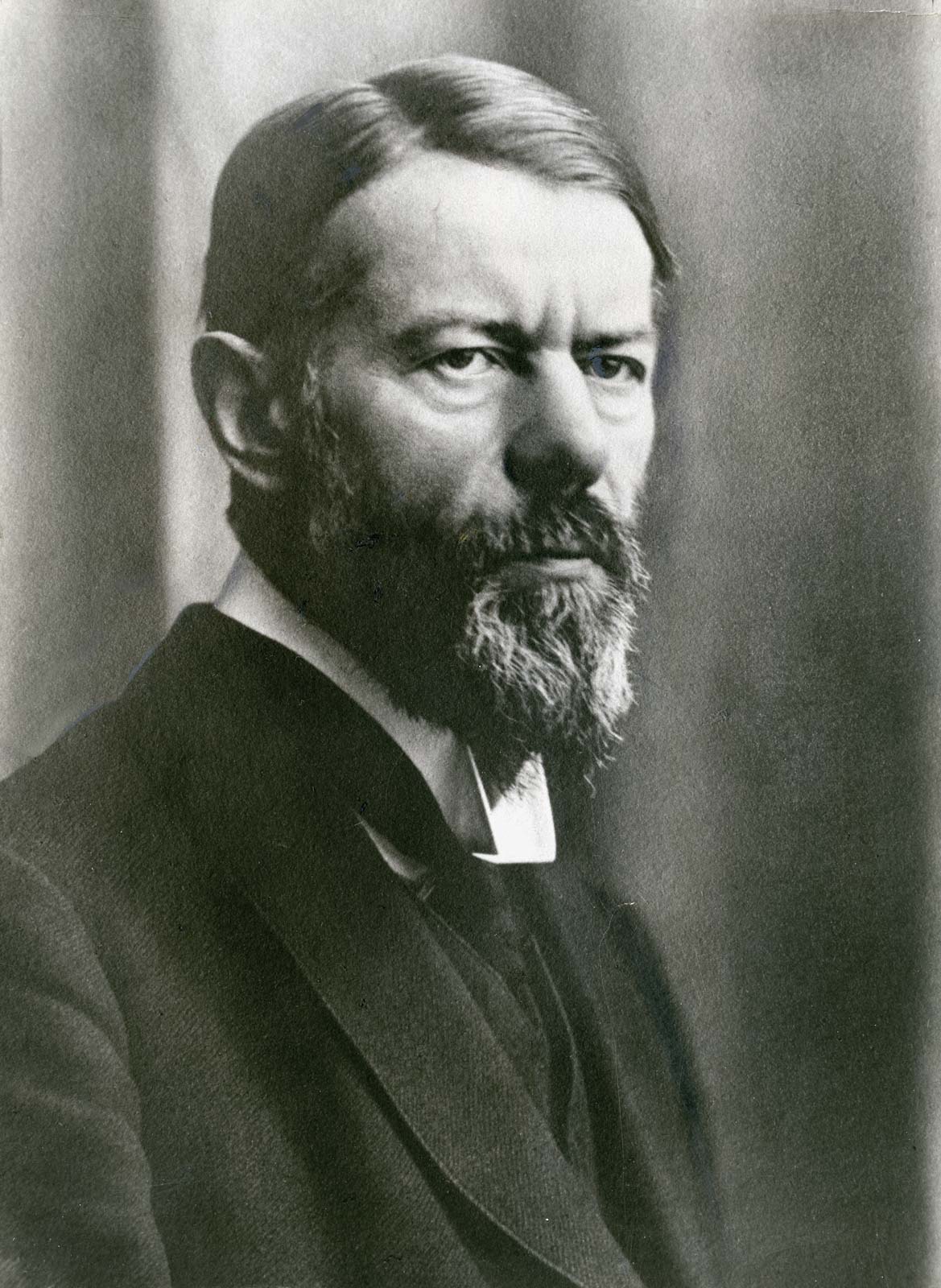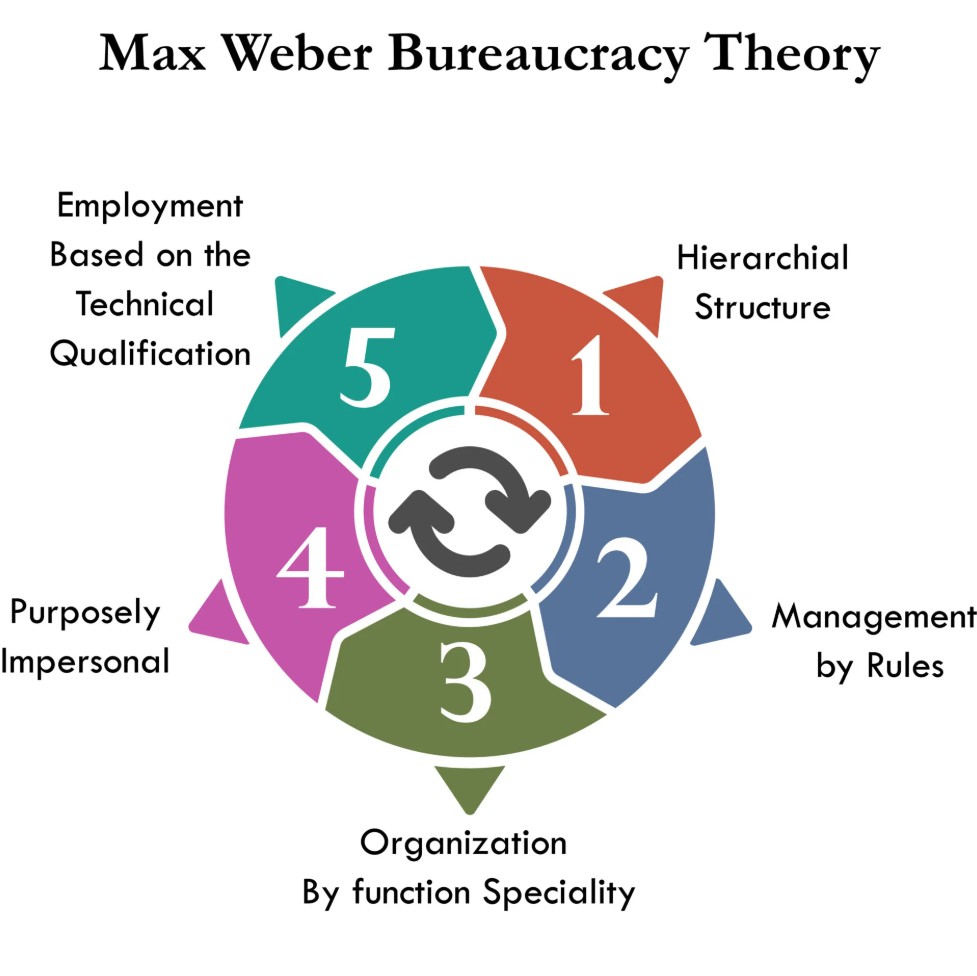
- Max Weber’s Bureaucratic Management Theory is one of the foundational theories in management.
- Weber, a German sociologist, introduced this theory in the early 20th century.
- Weber’s ideal type of bureaucracy was described in Economy and Society, published in 1921.
- He believed that organizations should be managed by a set of clear, rational rules to ensure efficiency, stability, and fairness.
- Weber’s theory emphasizes on career orientation, impersonality, authority hierarchy, division of labor, formal selection etc.

Key Characteristics of Bureaucracy:
- Hierarchical Structure: Organizations should have a clear chain of command. Each employee knows who they report to and what authority they have. The higher up in the hierarchy, the greater the authority and responsibility.
- Rules and Regulations: Bureaucracies operate under a set of rules and standard operating procedures (SOPs) that govern how work is to be done. These rules ensure predictability and consistency in performance.
-
Specialization and Division of Labour: In a bureaucracy, tasks are divided into specialized roles. Each worker has a clearly defined job and set of responsibilities, making the organization efficient.
-
Impersonality: Bureaucratic organizations operate in an impersonal manner, meaning decisions are based on rules, not personal preferences or relationships. This ensures fairness and neutrality in decision-making.
-
Career Orientation: Employment in a bureaucracy is based on qualifications and merit. Employees are selected and promoted based on their skills and experience, and their employment is seen as a long-term career.
-
Formal Communication: In a bureaucratic system, communication follows a formal channel. Information flows through official channels, and proper documentation is maintained.
However, Max Weber’s bureaucratic theory has been questioned and critiqued in modern times, largely for reasons such as:
-
Pressure to innovate: In today’s fast-changing environment, organizations require flexibility and agility, which Weber’s rigid bureaucracy can hinder.
-
Globalization and growth: Large organizations may struggle with the bureaucratic system, finding it slow to adapt to changing global markets.
-
Need for creativity: Bureaucracy often stifles creativity, which is essential for business growth and innovation.
-
The bureaucratic form of organization been fundamentally questioned as organizations are experiencing acute pressure to change and pursue innovation as a means of securing business growth.
Conclusion:
Max Weber’s Bureaucratic Management Theory was a response to the inefficiencies he observed in organizations that lacked formal structures.
The theory introduced the idea that large organizations can operate more efficiently if they follow clear rules, hierarchical authority, and impersonal relationships.